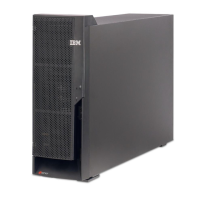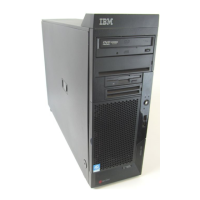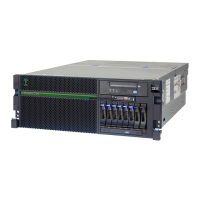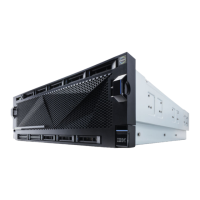iSeries architecture: Fundamental strength of the IBM ^ i5 and iSeries 21
Draft Document for Review October 18, 2004 5486AdvTech.fm
The transistors are built within and on top of a thin layer of silicon that is on top of
an insulating layer. The insulating layer is fabricated by implanting a thin layer of
oxide beneath the primary silicon surface of the wafer. SOI is used by AS/400e
and iSeries processors with ISTAR, SSTAR, POWER4 and POWER5 technology.
On-chip copper-wiring technology
Northstar technology used in prior AS/400e processors deploys aluminum for
on-chip wiring. Pulsar, ISTAR, SSTAR, POWER4 and POWER5 processors use
on-chip copper-wiring technology. Pulsar processors integrate IBM CMOS 7S
technology. ISTAR and SSTAR processors integrate IBM CMOS 8S technology.
POWER4 processors integrate CMOS 8S3 technology and POWER5 processors
itegrate CMOS9S3 technology.
Copper's better conductivity permits thinner wires to be used, which enables the
transistors to be packed closer together. This denser technology permits
additional micro architecture methods to improve performance. Denser
processor technology also permits more on-chip cache. Keeping multiple levels
of high-speed cache enables efficient utilization of the processors.
Powerful processor features based on the IBM industry leading copper and SOI
technology were added in 2002.
Advanced I/O architecture
AS/400, and now iSeries, servers have a tremendously powerful and flexible I/O
architecture, from the main processor or microprocessor all the way to the disk
drive, tape device, local area network (LAN) or wide area network (WAN), or
other I/O device. Focusing on one component of this architecture, the I/O cards
which are inserted into the iSeries servers, are a combination of an I/O processor
card (IOP) and an I/O adapter card (IOA).
The IOP/IOA is a mainframe-inspired implementation. Other midrange or PC
servers use only an IOA. Using the combined IOP/IOA architecture gives the
iSeries several advantages. The architecture off loads cycles from the main
processor, isolates the main processor from the adapter and network errors, and
manages, configures, and services the IOAs.
When the first AS/400 systems where announced, a set of IBM proprietary I/O
standards called System Products Division (SPD) were used. In the late 1990s,
IBM started the movement to the emerging industry I/O standards called
Note: For historical reasons, disk, tape, and workstation IOAs are called
controllers on the AS/400 and iSeries.
